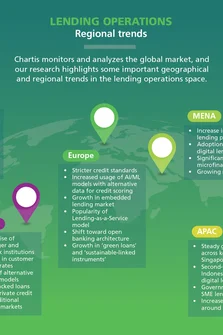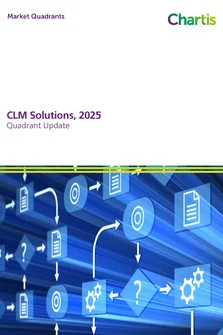<p><strong>Meeting a need</strong></p>
<p>Data integrity has now become a critical consideration in the financial services (FS) sector, as reduced profit margins, regulatory pressure and the explosion of data threaten to overwhelm current approaches to the issue. For several internal and external reasons, financial institutions (FIs) now need higher quality data and better processes to analyze it. Technology budgets are tight, however, and FIs have to get more out of their current infrastructure. Boosted by advances in technology such as lowcost computing, an emerging sector of solutions is starting to address this need.</p>
<p>Largely as a result of these factors, Chartis now defines ‘data integrity and control’ as a category of technology solutions in its own right. In our view, the data integrity value chain for FIs has six distinct elements:</p>
<ul>
<li>Matching</li>
<li>Quality</li>
<li>Consistency</li>
<li>Transformation</li>
<li>Integrity</li>
<li>Distribution</li>
</ul>
<p>Of course, vast improvements in technology mean that implementing almost any modern FI-focused solution will improve data integrity and control. The most commercial applications that focus on collateral management, core banking, market and credit risk or regulatory reporting have very significant data management components. In some cases, the embedded data management capabilities in a general commercial application may be very strong, so will qualify for inclusion in our analysis. However, we advocate including only those vendor solutions that are, or may be, implemented independently of applications such as those mentioned above.</p>
<p><strong>Market and enterprise dynamics shaping demand</strong></p>
<p>In a market where margins are under pressure, accurate, high-quality data is a must for any FI: to keep the regulators happy, and to supply internal executives with strong, comprehensive data so they can assess their own risks and returns. But the downward pressure on profits is also forcing FIs to think creatively, as they have less money to work with.</p>
<p>Historically, organizations have looked at specialized data integrity and control capabilities as natural extensions of their workflow and operational processes. However, prevailing technological and regulatory factors mean these solutions are now here for the long term. Indeed, it’s a sign of an FI’s organizational maturity if it can integrate data integrity and control solutions into its future architectural needs, and ultimately use them to gain a competitive edge.</p>
<p>The pace of change of technology can be seen in the development of data lineage, semantic technologies, general-purpose flexible reconciliation, and the representation and management of complex data types such as graphs and documents. Regulators’ demands focus on adaptable infrastructure (a technology infrastructure that adapts to new business needs and data types), and new requirements for regulatory disclosure and transparency. These include the data requirements embedded in the Comprehensive Capital Analysis and Review (CCAR), Dodd-Frank Act Stress Tests (DFAST) and European Banking Authority (EBA) regulations, as well much of the analysis into liquidity and models embedded in the Fundamental Review of the Trading Book (FRTB).</p>
<p>Many of the data control processes that FIs currently use (such as transaction reconciliation and the development of pricing and curves data) are manual, expensive, time-consuming and unreliable. Introducing automated integrity and control solutions can significantly reduce these costs, offering an immediate Return on Investment (ROI) for automation, despite the rather ironic twist that regulators’ demands for data have forced many FIs to increase their manual approaches in the short term.</p>
<p>Meanwhile, the phenomenal increase in data in recent years has put more pressure on FIs to categorize, tag and manage their data throughout its lifecycle. Part of this will be redefining how they assess their data as structured or unstructured, which we believe should now follow a continuum rather than an either-or categorization.</p>
<p>One cornerstone of data integrity and control is reconciliation, and this will be a key theme of this report. It also highlights the rise of end-user computing (EUC) applications, which are offered in some form by almost all the vendors we have observed in our analysis.</p>
<p>Finally, the way in which FIs and vendors define the most important functional requirements for this new category of solution is largely based on three high-profile data-focused regulations: the BCBS 239 principles (which have international coverage), the Solvency II legislation (which covers the EU), and the Supervisory Guidance on Model Risk Management (where the primary focus is the US). Solvency II is directed only at insurers, but recent supervisory guidance and lessons published by the UK Prudential Regulation Authority (PRA) offer plenty of information about the practicalities of data integrity and control inside any FI. BCBS 239, meanwhile, has the most far-reaching expectations, because it demands significant improvements to data management within and across business processes. In addition, institutions not directly covered by the regulations often use these three regulatory guidelines as benchmarks for their internal approaches and long-term goals.</p>
<p><strong>New functionality required</strong></p>
<p>These dynamics are creating demands for new and enhanced capabilities across the data integrity value chain that vendors will attempt to address, either directly or through a combination of offerings. This is a fertile market, and will experience several important and notable shifts in the coming months and years.</p>
<p>This report uses Chartis’s FinTech Quadrant™ – as part of its supply-side analysis – to explain the structure of this new market. The FinTech Quadrant™ uses a comprehensive methodology that involves in-depth independent research and a clear scoring system to explain which technology solutions meet an organization’s needs. The FinTech Quadrant™ does not simply describe one technology option as the best Data Integrity and Control solution; rather it has a sophisticated ranking methodology to explain which solutions are best for specific buyers, depending on their implementation strategies.</p>
<p>This report covers the leading vendors offering data integrity and control solutions, including Ab Initio, AxiomSL, BearingPoint Software Solutions, Bloomberg, CIMCON, ClusterSeven, dLineage, FIS, Gresham, IBM, IHS Markit, Informatica, KPMG, Manta Flow, Message Automation, Oracle, Pentaho, SmartStream, Talend, UnaVista, Workiva and zeb.</p>
Only users who have a paid subscription or are part of a corporate subscription are able to print or copy content.
To access these options, along with all other subscription benefits, please contact info@risk.net or view our subscription options here: http://subscriptions.risk.net/subscribe
You are currently unable to print this content. Please contact info@chartis-research.com to find out more.
You are currently unable to copy this content. Please contact info@chartis-research.com to find out more.
Copyright Infopro Digital Limited. All rights reserved.
As outlined in our terms and conditions, https://www.infopro-digital.com/terms-and-conditions/subscriptions/ (point 2.4), printing is limited to a single copy.
If you would like to purchase additional rights please email info@chartis-research.com
Copyright Infopro Digital Limited. All rights reserved.
You may share this content using our article tools. As outlined in our terms and conditions, https://www.infopro-digital.com/terms-and-conditions/subscriptions/ (clause 2.4), an Authorised User may only make one copy of the materials for their own personal use. You must also comply with the restrictions in clause 2.5.
If you would like to purchase additional rights please email info@chartis-research.com


